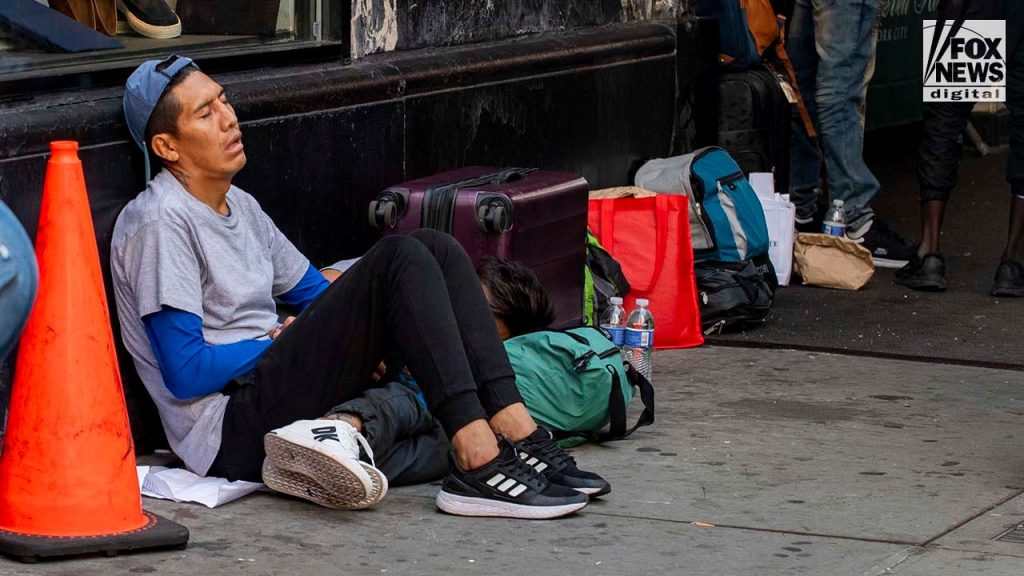The brutal stabbing of a 35-year-old homeless shelter employee outside a Days Inn in Brooklyn’s Brownsville neighborhood has cast a harsh light on the challenges facing the city’s shelter system and the broader issue of rising crime. The victim, whose identity remains undisclosed, was attacked around 6:20 p.m. on Thursday, suffering multiple stab wounds to his neck and abdomen. He managed to stumble back into the hotel seeking assistance, but tragically succumbed to his injuries after being transported to Brookdale Medical Center. The suspect, described as a male dressed in black, wearing a baseball cap and ski mask, remains at large, with police actively pursuing leads in their investigation. The motive for the attack remains unclear, leaving the community on edge and sparking further discussions about safety within the shelter system and the surrounding neighborhood.
This incident underscores the escalating tensions surrounding the repurposing of hotels into homeless shelters, a practice that gained traction during the COVID-19 pandemic. The Days Inn where the stabbing occurred is one of several hotels in the area converted to address the growing homeless population. This strategy, while intended to provide temporary housing, has met with resistance from some residents who express concerns about increased crime and a strain on local resources. The neighborhood has reportedly witnessed a surge in violent incidents, including stabbings, fueling anxieties and prompting calls for enhanced security measures. The situation highlights the complex interplay between housing insecurity, community safety, and the need for comprehensive support systems for both the homeless population and the neighborhoods accommodating them.
The strain on New York City’s shelter system has been exacerbated by the influx of migrants seeking refuge, placing immense pressure on the city’s resources and infrastructure. Since April 2022, an estimated 220,000 migrants have arrived in the city, with over 58,000 currently relying on the city’s support network. Mayor Eric Adams has repeatedly voiced his frustration with the federal government, arguing that the city lacks adequate resources to address the escalating crisis. The influx has further complicated the challenge of providing adequate shelter and support services, putting a strain on existing facilities and underscoring the urgent need for a coordinated, multi-level response to the migrant crisis.
The stabbing incident and the broader context of the city’s shelter struggles raise critical questions about the efficacy of current policies and the need for more comprehensive solutions. The conversion of hotels into shelters, while providing immediate housing, has also created new challenges, including security concerns and community tensions. The influx of migrants has further strained the system, pushing it to its limits and highlighting the need for long-term, sustainable solutions. Addressing these issues requires a multi-faceted approach that includes increased funding for shelter services, expanded mental health and addiction treatment programs, and a concerted effort to address the root causes of homelessness, including affordable housing shortages and economic inequality.
The tragedy also brings into sharp focus the broader issue of rising crime in New York City, a trend that has impacted both residents and the homeless population. While the connection between homelessness and crime is complex and often misrepresented, the concentration of vulnerable individuals in shelter settings can create an environment susceptible to criminal activity. Addressing this requires a holistic approach that encompasses both preventative measures and responsive strategies. Increased security within shelters, coupled with community policing initiatives and targeted support services, can contribute to creating safer environments for both shelter residents and the surrounding community.
Moving forward, effectively addressing the challenges facing New York City’s shelter system and the broader issues of homelessness and crime requires a collaborative effort involving city officials, community organizations, and residents. Investing in comprehensive support services, expanding access to affordable housing, and implementing effective crime prevention strategies are crucial steps towards creating a safer and more equitable city for all. The tragic stabbing of the shelter employee serves as a stark reminder of the urgent need for action and the importance of providing a safety net for the city’s most vulnerable populations while addressing the root causes of both homelessness and crime.

